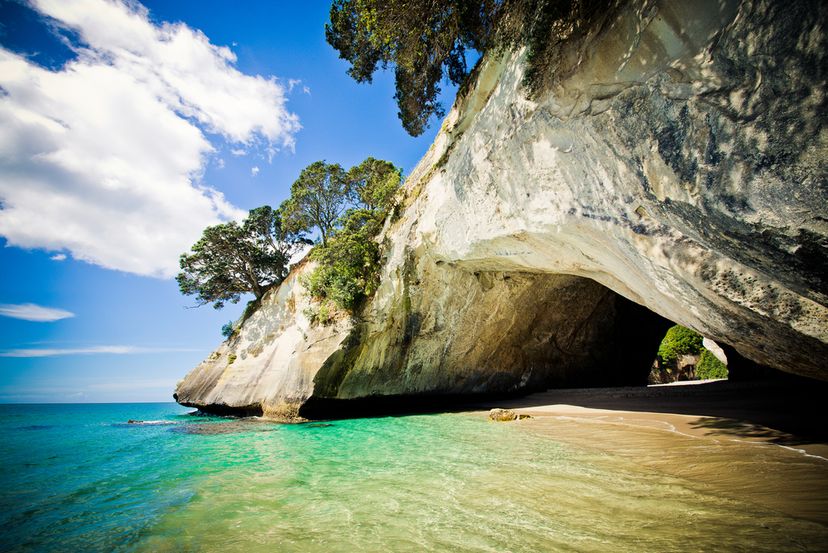
When combined, water and wind can do some pretty incredible things, such as create these magnificent sea caves. While some of the spectacular sea caves are well known for being some of the largest and longest, others are quietly tucked away, begging to be discovered. Most of them aren’t easy to access but put in the effort and you shall be rewarded. From the coast of Oregon to the Islands of Scotland to Chile and Portugal here are the most spectacular sea caves in the world.
Advertisement
10. Sea Lion Cave, Florence, Oregon, USA
It wouldn’t be a list of sea caves without including America’s largest sea cave, the Sea Lion Cave, which gets its name from the resident sea lions that lounge around it and bark excessively. The formation of this cave happened about 25 million years ago and now is as large as the length of a football field and as high as a 12-storey building. Although it has become quite a popular tourist attraction, there is even an elevator that takes you down to the cave; it is simply a wonder that must not be missed.
Besides sea lions, visitors will have the chance to take in the colors of the cave as over years lichen, minerals and algae have painted it in hues of pinks, purples, and reds. Other animals you may witness in and around the cave are sea birds and whales. Visitors must be able to walk along the trails and steps down the cave and should be prepared that there are not always sea lions in and around the caves, as this is the wild, not the zoo.
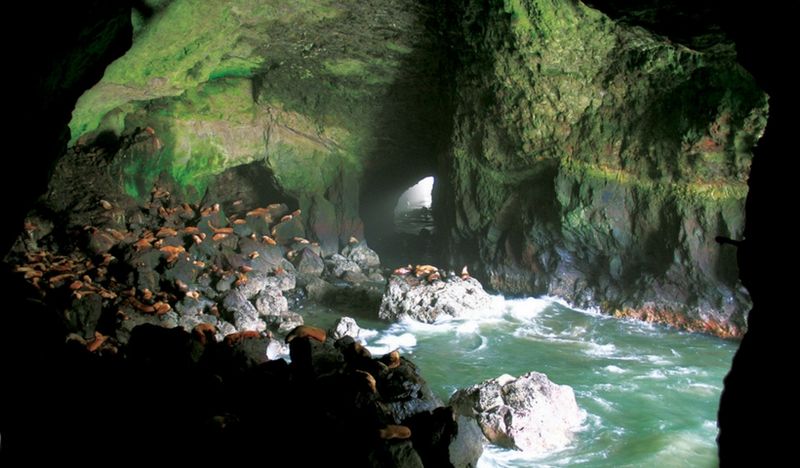
Advertisement
9. Smoo Cave, Durness, Scotland
This impressive geological wonder includes both fresh water and sea water and was actually carved into the limestone by the Alt Smoo, a river that runs above and pours into a cavern through a sinkhole. Nearly 40,000 people visit each year and improvements are taking place to install new walkways, washrooms and other amenities for visitors. The cave is quite interesting in that the main entrance was formed by the sea and the inner chambers by the river.
Going there to view the entrance and main cave is free and for a small amount visitors can take a tour into the smaller chambers and see a beautiful waterfall. The tour is definitely recommended but make sure you go early as they fill up fast. One of the most unique caves on this list, it’s not to be missed if you happen to be in Scotland.
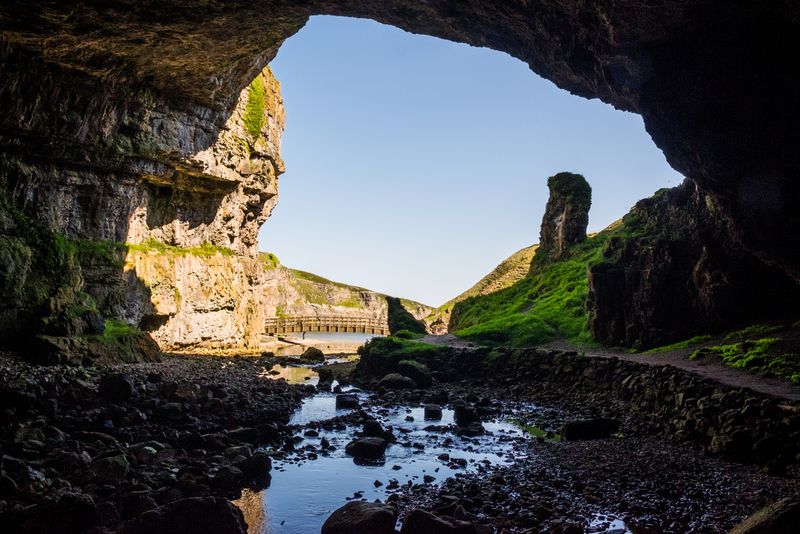
Advertisement
8. Painted Cave, California, USA
It is one of the largest and deepest sea caves in the world, located on the craggy coast of Santa Cruz Island in California. At over 130 feet high and nearly a quarter mile long, this sea cave gets its name from the numerous colors that make it up. Colorful rocks, lichen, and algae adorn the walls of the cave, turning it into a colorful piece of art.
The cave is made up of several inner chambers and the best way to explore them is by taking a boat to the island and then kayaking your way through the cave. Visiting in the springtime is perhaps the best time, as a beautiful waterfall cascades down in front of the entrance to the cave. There are many guided tours to choose from which will provide you with all the gear, flotation devices, snorkels and information you need.
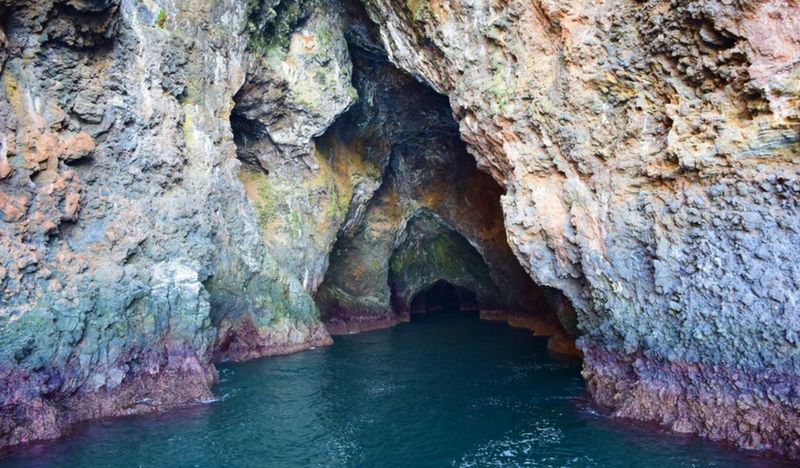
Advertisement
7. Fingal’s Cave, Staffa, Scotland
It is located on the island of Staffa and is also known as the cave of melody or as novelist Sir Walter Scott explained it, “one of the most extraordinary places I have ever beheld”. This sea cave is well known for two things, the eerie sounds that it makes and the arching cathedral-like geological features. In fact, the entire cave is made up of hexagonal basalt columns and is the only one of its kind in the entire world.
Visitors here can discover this cave by taking a sightseeing cruise from the town of Hull. The cruise ship will land close to the cave and the basalt columns actually provide the perfect stepping stones to enter into the cave. When it groans and moans, just know that these sounds are quite normal for this sea cave.
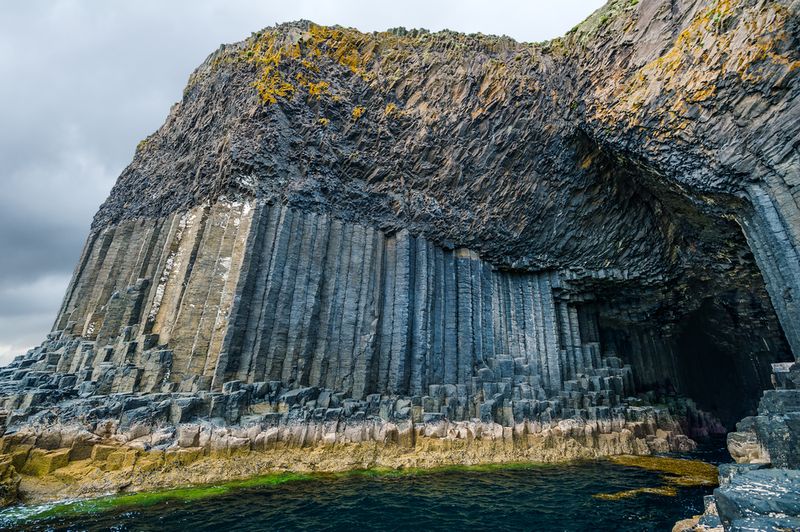
Advertisement
6. Apostle Island Sea Caves, Wisconsin, USA
The Apostle Islands are home to some of the most spectacular caves on the planet, and although they aren’t located in the “sea”, instead they are in Lake Superior; they are still technically referred to as sea caves. Summertime brings boaters and kayakers to the lake to explore the caves that feature red sandstone cliffs, the sparkling lake, and forested trees in the distance, with forceful waves spraying and breaking into the caves.
It is extremely important to check with water conditions before you head into the caves as it can be quite dangerous. Wintertime is when these caves really shine. As Lake Superior freezes in the winter, so do the damp caves and waterfalls, creating incredible ice formations both in and outside the caves. When the lake is sufficiently frozen over, visitors can hike, snowshoe or ski to get access to the caves.

Advertisement
5. Benagil Beach Sea Cave, Algarve, Portugal
This beautiful dome of a sea cave is located in the tiny town of Benagil and is one of the best gems of the whole Algarve coast. To get there you either have to take a local boat or rent a kayak and paddle out there, some visitors have even made the swim out as it is located just to the east of the village on the beach.
The cave is simply stunning, with a skylight at the top letting the light shine in, illuminating the sandy and with warm waters to swim in. Visiting during high or low tide will give you the same amazing experience and visitors will want to make sure the tour they take will let them spend some time exploring as many just buzz in and out of the caves, in a hurry.
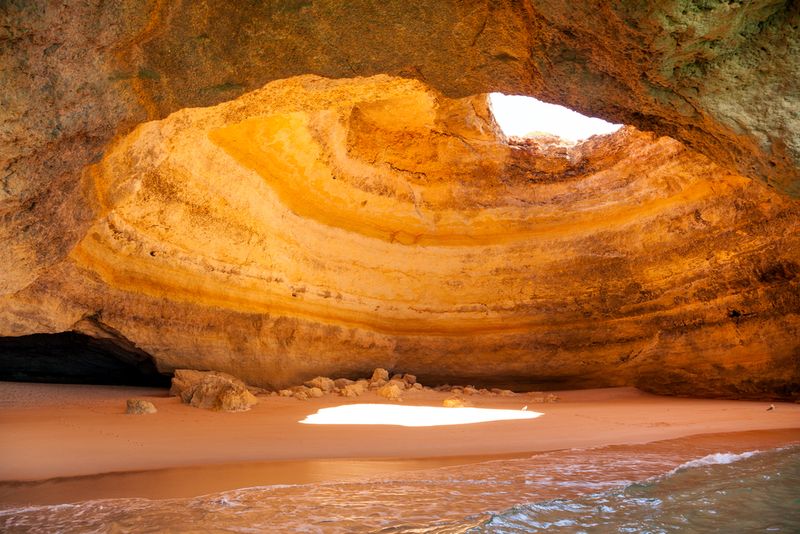
Advertisement
4. Cuevas de Mármol, Chile Chico, Chile
It seems that Mother Nature has outdone herself with this next set of incredible sea caves. Carved into the Patagonian Andes, the Cuevas de Mármol are located on a peninsula of solid marble bordering Lake General Carrera, a remote glacial lake that spans the Chile-Argentina border. This block of marble is said to weigh over five billion tons.
The caves have been formed by thousands of years of waves washing up against the calcium carbonate. The colors of both the lake and caves change depending on the time of year and water level and the luckiest visitors will experience swirling blue cavern walls and azure waters. To get here, visitors must take a boat and thirty minute tours are operated by a local company with weather and water conditions permitting.

Advertisement
3. Blue Grotto, Capri, Italy
It is one of the most well-known sea caves around the world, and for good reason. Back in Roman times, this sea cave was the personal swimming hole for Emperor Tiberius and in the 1960’s there were three Roman statues of sea gods found on the ocean floor. For years this cave was avoided as locals believed it was inhabited by evil spirits and monsters. Today though, it is enjoyed by many, although no swimming is allowed.
To enter the cave visitors must take a boat, and lay flat down on the bottom in order to get through the 4X4 entrance. What makes this cave so special is the color of the water inside, as it glows a bright and brilliant blue, a color that is so unworldly it’s hard to believe it exists in here. Visitors wanting to go inside this cave should be aware that inclement weather may lead to an unsafe passage and therefore trips may be delayed or canceled.
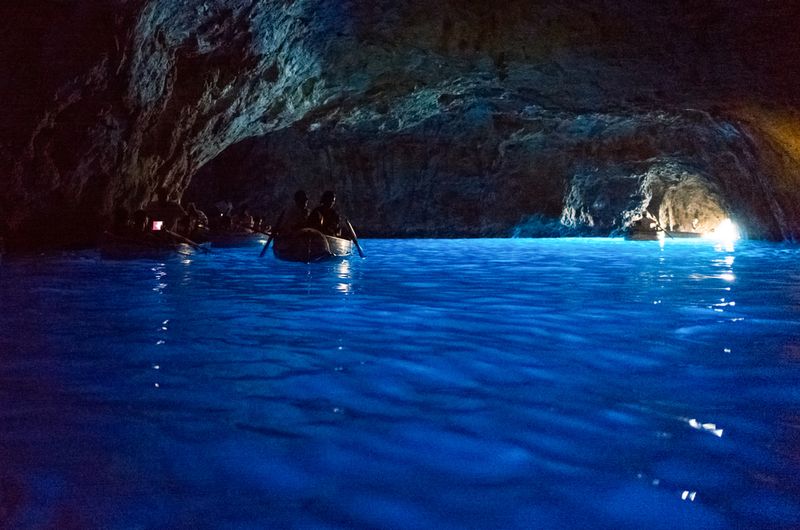
Advertisement
2. Cathedral Cove Sea Cave, Coromandel, New Zealand
Cathedral Cove holds a total of five incredible sea caves, along the Catlins Coast of southeastern New Zealand. There are actually two main cave systems that join together with the cliff, one having a ceiling height of 100 feet. Getting to the caves at the right moment is the hard part as they are only accessible for two hours on either end of low tide.
The reward is worth it though, exploring an area that is otherwise always underwater, a place where visitors can often spot blue penguins and fur seals from the gloomy end of the cave. If you are planning on visiting here make sure to check the tides and bring a flashlight, as the caves are extremely dark.
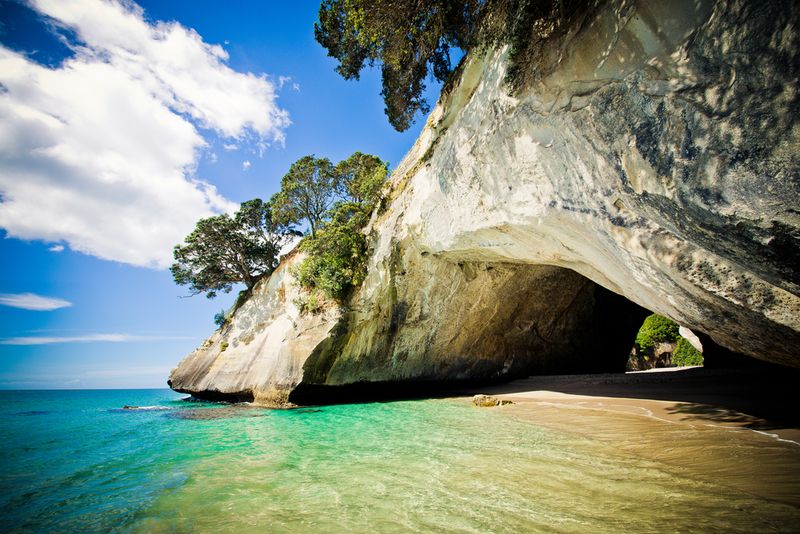
Advertisement
1. Waiahuakua Cave, Kauai, Hawaii, USA
It ranks as one of the world’s longest sea caves in the world, standing at 1,155 feet long. It is often referred to as the “double door cave” as it has both an entrance and an exit. The cave is located along Kauai’s Na Pali and is only accessible by water and visitors sometimes refer to it as dark and spooky. But fear not when you head in here as you will be treated with some incredible sights.
Unusual features include a large cathedral room, a white-lit tunnel hallway and a pinkish-red rock shaped like a hippo. The most magical part of this cave though is the waterfall that streams through a fissure in the ceiling. At certain times of the day when the light catches it the right way, the waterfall looks more like a bolt of lightning.
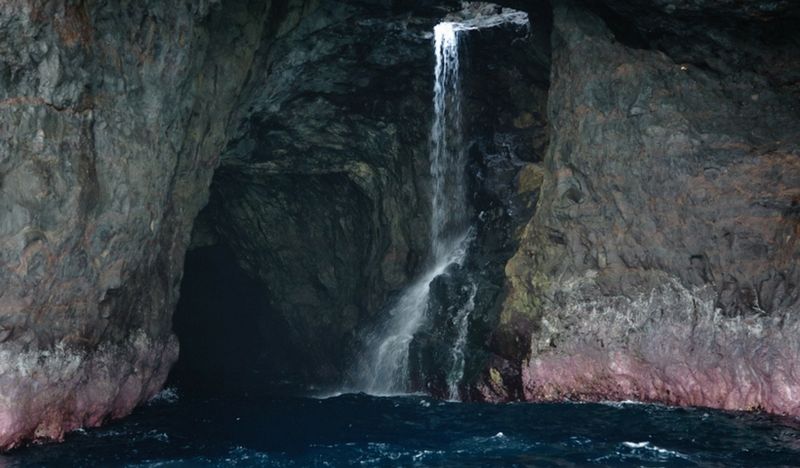
Advertisement